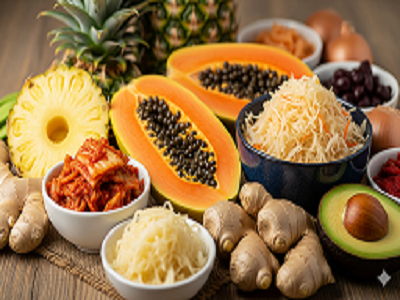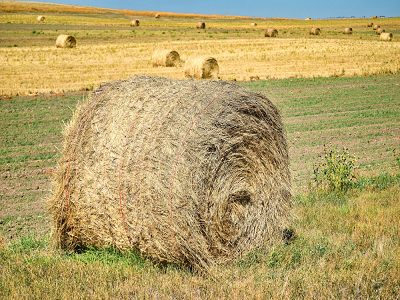
As environmental challenges continue to grow and the global population expands, sustainable food production has become essential. Traditional farming, though a foundation of human civilization, now faces numerous threats, including climate change, soil degradation, water scarcity, and unpredictable weather.
The world population, currently over 7 billion, is projected to reach 9.8 billion by 2050. Without sustainable and innovative methods like greenhouse farming, food insecurity will likely worsen. Fortunately, technology offers a viable solution in the form of
greenhouse farming. If you are curious to learn what greenhouse farming is, why it matters, and howit impacts sustainable food production, this article will guide you. To begin, let's define greenhouse farming.
What is a Greenhouse?
A greenhouse is an enclosed structure designed for growing plants. It uses frames covered with transparent materials such as glass or polyethylene to create a controlled environment. Specifically, greenhouses provide:
- Control of heat through cooling or heating systems
- Light management using shading or supplemental lighting
- Irrigation and nutrient supply regulation
- Carbon dioxide level control
- Protection from pests and diseases
Depending on location and crop type, various greenhouse structures exist. They differ in size, height, style, and materials. Nevertheless, regardless of design, greenhouses must ensure proper ventilation, light penetration, and pest protection to promote optimal plant growth.
Ultimately, a greenhouse should enhance plant development by providing a safe, improved environment. The structure's durability depends on the materials and their quality. Greenhouse facilities are reusable and adaptable. For more information, see the linked resources on greenhouse types and costs.
What is Greenhouse Farming, and How Does It Impact Sustainable Food Production?
Greenhouse farming is an innovative approach that supports sustainable food production. Instead of relying on nature alone, it grows crops inside protected environments that shield plants from extreme weather, pests, diseases, and other harmful factors. As a result, greenhouse farming minimizes the risks that reduce yield quality and quantity in traditional agriculture. This, in turn, affects produce quality and farmer income, ultimately limiting sustainability.
Moreover, greenhouse farming enables the cultivation of crops outside their natural regions without sacrificing quality. For example, tropical crops can thrive in cold areas, while temperate crops can grow in warmer zones. This flexibility comes from the ability to control all environmental factors through greenhouse technology.
Technological Advancements Enhancing Greenhouse Efficiency
Modern greenhouse farming combines agricultural science with cutting-edge technology. Through the integration of automation and digital toolssuch as sensors, climate control systems, artificial lighting, and nutrient deliveryfarmers can achieve precision agriculture like never before.
For instance, IoT-enabled sensors continuously monitor microclimate conditions. These sensors send real-time data to systems that automatically adjust heating, ventilation, irrigation, and lighting. In addition, soilless cultivation methods such as hydroponics, aeroponics, and aquaponics improve water usage and nutrient management.
Furthermore, LED grow lights emit specific wavelengths to optimize photosynthesis. They allow plants to grow during low-light periods or in regions with limited sunlight. Altogether, these technological advancements reduce resource consumption while increasing productivity.
Benefits of Greenhouse Farming
Greenhouse farming offers numerous advantages over traditional methods. Some of the most significant include:
- Year-round production: Crops are no longer seasonal and can be grown continuously.
- Protection from harsh weather: Frost, storms, and extreme temperatures no longer damage crops.
- Pest and disease control: Greenhouses shield crops, reducing losses and minimizing pesticide use.
- Access to fresh, quality produce: Urban greenhouse farms reduce transport time, preserving freshness and nutrition.
- Resource efficiency: Farmers supply water, nutrients, and pesticides in precise amounts, cutting costs and waste.
- Safe, healthy food: Reduced pesticide use and proper nutrition improve produce safety and quality.
- Higher yields and profits: Better growth conditions increase both quantity and quality, boosting farmer income.
- Land maximization: Vertical farming inside greenhouses allows multiple crop layers, increasing output per area.
Consequently, greenhouse farming provides a resilient model that enhances food availability and farmer profitability.
Key Developments in Greenhouse Farming
To illustrate the industry's progress, on February 4, 2025, BASF developed a certified industrial compostable biopolymer for sustainable greenhouse fruit and vegetable cultivation. This innovation allows for the production of black and white plant clips made from ecovio? 60 IA 1552. These clips fasten crops like tomatoes, cucumbers, and peppers in commercial greenhouses. Importantly, they offer strength and flexibility while meeting EN 13432 compostability standards.
Additionally, in March 2024, Atlanta-based Cox Enterprises launched Cox Farms, a new venture focused on sustainable agriculture. With Mucci Farms and BrightFarms in its portfolio, Cox Farms has become one of the largest greenhouse operators in North America. According to a news release, the company harvests 360 million pounds of produce annually.
Conclusion
Greenhouse farming presents a sustainable path to meeting global food demands. By enhancing productivity, conserving resources, and reducing environmental impact, it offers a forward-thinking alternative to traditional farming. As technology continues to evolve and access to greenhouse systems improves, this model promises to revolutionize agriculture. Ultimately, it will help ensure food security, protect ecosystems, and support economic stability for future generations worldwide.








